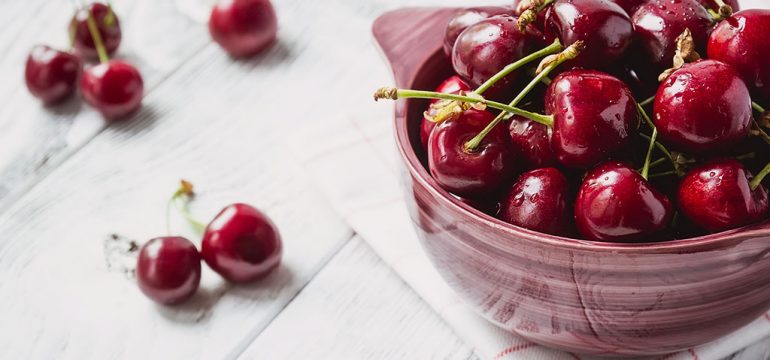Cherry trees, also known as the cherry blossom trees, are a sight to behold in the spring when they blossom in great colors. These trees produce delicious fruit that most people know and enjoy eating. If you are considering adding this to your garden, then you need to make sure you are buying the right one. You can buy cherry trees online for the best results.
Here are the steps to raising healthy cherries
Step 1: Cherry Tree Type
Your choice of a cherry tree depends on the climate. Consider your climatic zones to make sure that your cherry blossom trees can grow and blossom effectively, and produce healthy fruits. For instance, sweet cherries grow in areas with mild summer temperatures and moderate winter temperatures.
Also, the size of your tree is another factor to consider. Do you want a standard, dwarf, or semi-dwarf tree? A standard tree has a typical height of 40’’. This might be too big for those who want to plant a tree in their home for its aesthetic value. Home growers can opt for dwarf and semi-dwarf trees which can range from five to 20’ tall. These are the most common tree types in home gardens.
While choosing the tree type, you should also consider the chilling factor. During fall, such trees go into dormancy and start to lose their leaves. It would require a temperature of somewhere between 35 and 55 Fahrenheit for them to produce well. Luckily, this factor is considered when they are rated for different climate zones. So, if you select a variety that is advised by your local extension service, this requirement would have already been factored in.
Step 2: Planting
You can plant cherry trees in various forms be it bare root or p in a container. Early spring is the best time to plant bare-root trees while mid-spring looks just fine for containerized cherry trees. The planting hole for cherry trees is the same as for any other fruit tree. When placing the tree in the planting hole, check that the graft union is at least 3’’ above the surrounding soil level. Backfill the planting hole and add water. To ensure that the planting holds conserve water, add a light mulch underneath the tree. This also prevents the growth of unwanted plants. Access to natural sunlight is another factor that you might want to consider. Before a cherry tree starts bearing fruit, it needs access to at least 6 hours of sunlight daily.
For planting sweet cherries, keep in mind that they grow best in places where there is good soil drainage. Also, the soil should have a pH between 6.3 and 7.2. However, if you want to go with tart cherries then you won’t need to pay heed to any such requirements as they can easily grow on different soils.
Step 3: Pruning
If you’re looking forward to healthy-looking cherry fruits, pruning is essential. The reason why pruning is advised is not to limit the tree in terms of fruit production. Also, it helps open up the trees so other parts of the tree can be exposed to the natural sunlight. Cherry tree pruning should be done in late winter or early spring.
Always remember that sweet cherries grow on spurs which are short shoots that arise from lateral leaf buds. Therefore, it is advisable to leave spurs whenever you prune your trees to get the best quality and tasty fruit. You should also consider taking steps for the development of spurs for this purpose. On the contrary, tart cherries don’t require much pruning.
Step 4: Fertilizing
To get the most of your cherry tree, be sure to fertilize at least once a year. The best time to apply fertilizer is in early spring, about a month before the blooming season. You should only use low-nitrogen fertilizers. The use of high-nitrogen fertilizers will make your tree vulnerable to brown rot infection. If on the other hand, you fertilize your yard regularly, then it is needless applying fertilizer to the cherry tree as it is probably getting more than enough nitrogen. After a successful planting season, it is time to harvest. Do not pick cherries without first tasting them. You may discover that some fruits have a sour taste when they are overripe.
Frequently Asked Questions:
Q1. What is the best fertilizer for cherry trees?
Fertilizers by AgroLiquid and Haifa are best for the fruit tree.
Q2. What do cherry trees symbolize?
Such fruit trees symbolize rebirth, renewal, and reincarnation.
Q3. Do you need two cherry trees to get cherries?
You can plant just one fruit tree if you want to get tart cherries. However, for sweet cherries, two different varieties of fruit trees are required. This is because it will help in cross-pollination and would give you the best cherries.
Q4. Do cherry blossom trees give cherries?
Yes, cherry blossom trees do give cherries.
Q5. Are coffee grounds good for cherry trees?
Coffee grounds are highly acidic which means you will not be able to grow sweet cherries. However, you might grow tart cherries as they can adapt to a variety of soils.
Q6. How long does it take to grow a cherry tree?
Sweet cherries can grow 10 to 15 inches while tart cherries grow 8 to 10 inches each year.
Q7. What can I plant next to my cherry tree?
You can grow plants like Comfrey, Chives, Lupine, Dandelion, and White Clover next to your cherry trees.
Q8. How long does it take to get cherries from a cherry tree?
You will have to wait for 4 to 7 years for picking the Sweet cherries while for tart cherries, you would have to wait for 3 to 5 years to pick them.
Q9. What grows under plum trees?
Plants like Basil, Mint, Chives, Rosemary, Garlic, and Lavendar grow perfectly well under the plum trees.
Q10. How do you pollinate a cherry tree by hand?
- Take a small artist’s brush and touch the tip of the pollen-covered anthers. This will expose the pollen grains.
- Now, touch the receptive stigma of the flower with the pollen covered brush. The pollen will then be transferred.
- Keep transferring pollen from flowers of one tree to the stigma of flowers on a tree of a different variety or the same tree to get self-fruitful cherries.
Q11. What happens if you eat too many cherries?
Eating too many can lead to an upset stomach, weight gain, allergic reactions, and respiratory problems.
Q12. What is the best time to plant fruit trees?
Spring is the ideal season to plant fruit trees.




